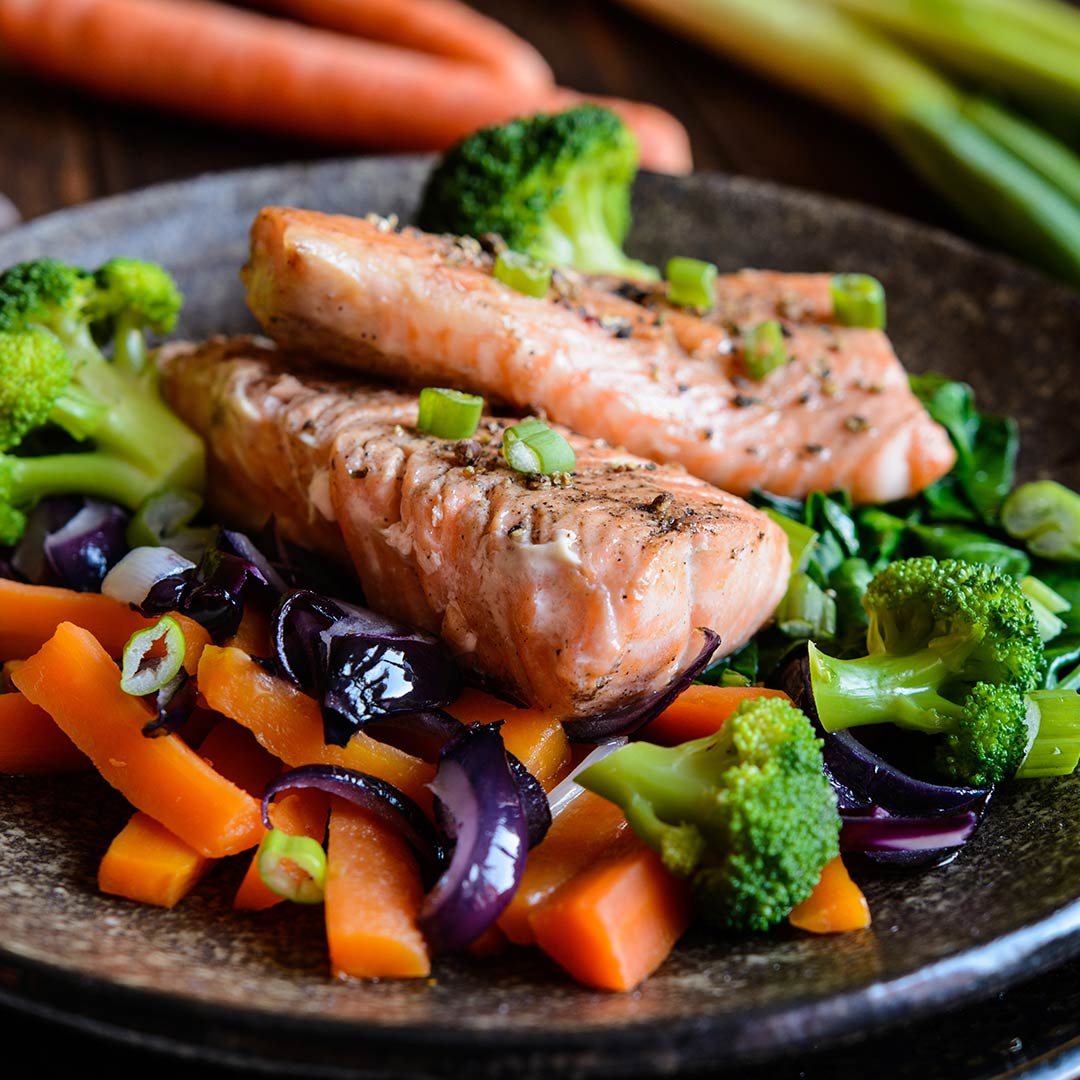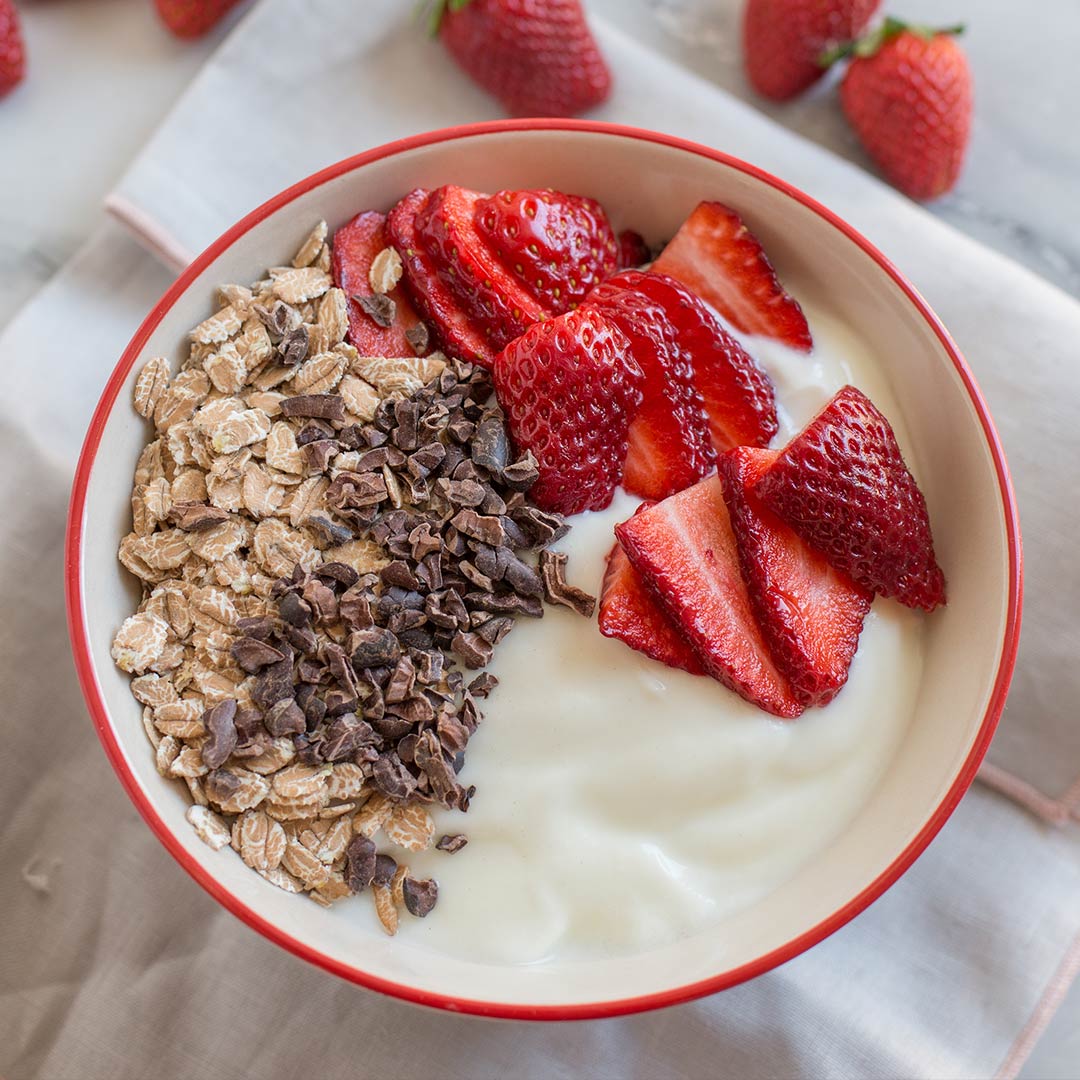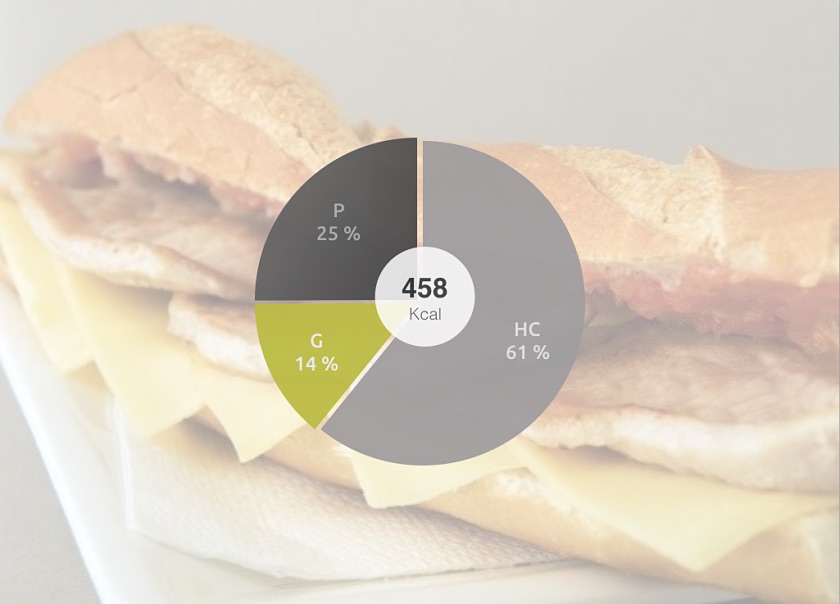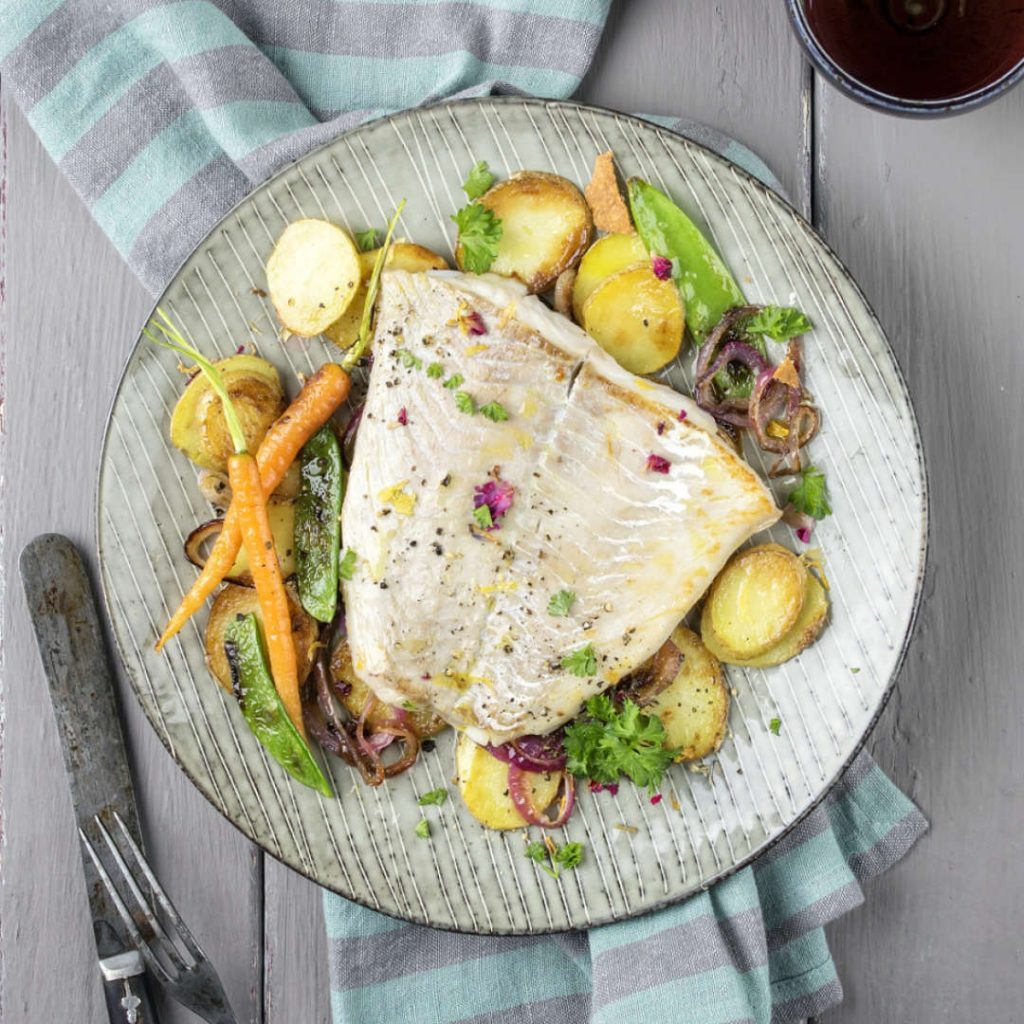What to eat to prevent injuries?
Many injuries occur in an unexpected and unavoidable way: bumps, falls, crashes … “hazards of the trade” in general. But in the world of sports there are many injuries that, for all of us to understand each other, “could be seen coming” and, therefore, can be prevented: tendinitis, contractures, tears, stress fractures … A An accumulation of muscle micro-tears that have not recovered well, an accumulation of contusions or an accumulation of bone micro-tears due to repetitive motion produce these types of injuries that do not go from 0 to 100, but are generated and that we could foresee before healing.
As you already know, an injury can be the consequence of many variables other than nutrition. Our body is a very complex system in which absolutely everything is interconnected and which, in addition, is quite unique in each person. Still, we are not resigned to trying to help you from here, so here are some generic tips that may be able to guide you:
Give your body what it needs at all times
A major cause of injury in athletes is poor diet, both due to caloric deficit and lack of necessary nutrients. It is precisely when we do sports, the more energy we need and the more complete our diet should be in macro and micronutrients. Not eating or eating little to lose weight or reduce fat percentage as soon as possible is the worst possible idea to prevent injury. (See Study).
Avoid ultra-processed
The problem with ultra-processed products is not so much that they carry “chemicals that are harmful” to our health, but rather that they make us believe that we are nourishing ourselves, when in fact they provide us with energy lacking in nutrients. They are very caloric but nutritionally very empty foods. The sugars and fats they contain are inflammatory and contain few minerals and vitamins.
Lots of variety
If you want to prevent injuries, eat varied. Your body needs a lot of different resources. There are more than 100 nutrients distributed in food and they all have their function. If you do not provide them with food, small errors, incomplete processes, small accumulated failures that end in injury may occur.
Reduce stress
Stress is not a problem unique to the brain. Every cell in your body can be stressed. Your boss stresses you, training stresses your muscles and joints, alcohol stresses your liver, having a caloric deficit to lose weight for a long time continuously stresses your entire body. Suffering stress means that the cortisol hormone generates free radicals that “spoil” the cells.
The antioxidants contained in many fruits and vegetables help reduce this damage caused by free radicals. In addition to highly media antioxidant foods such as blueberries, berries, etc. the polyphenols of dark chocolate in particular, have been shown to reduce the markers of muscle damage in young high-level soccer players (See Study ). And now you may be wondering what exactly do you mean by dark chocolate? 70%? 80%? Well, the blacker the better. Cocoa is the one that carries the polyphenols. The more cocoa and less milk and sugar, the more polyphenols.
Do not underestimate rest
Planning your dinners correctly will help you rest better and, consequently, prevent injuries. If we do not achieve the necessary deep sleep, we will not repair what is necessary. Avoid eating large amounts of food for dinner. Bingeing will put your stomach to work for several hours and delay entering deep sleep. Snack on foods rich in tryptophan such as eggs, a part of this will end up in the form of melatonin in your brain. Do not train hard shortly before going to sleep, this activates and stimulates us as if we were drinking a coffee.
But if nothing works for you, another option is to take melatonin . It is not a drug, but a neurohormone that works together with the one we produce ourselves. It does not generate tolerance or addiction so there is no risk when supplementing with it. The dose is very variable from one person to another. There are those who notice the effect with 0.5 mg and those who need 10 mg. It is not dose-dependent (by taking more you do not sleep better), it is only necessary to reach the dose that each person needs to have the effect and maintain it. You can start with 0.5 mg and try, if you do not notice an effect you go up to 1 mg, but to 2 mg, and so on until you find the dose that works for you. You can buy it in supplement stores (cheaper) or in pharmacies.
Polyunsaturated fatty acids and anti-inflammatory effect
Many initiated athletes or those who have been unemployed for a while, start running with obvious excess weight and fat. In sports where there is an impact and without sufficient preparation to train hard, a multitude of problems are generated, especially at the joint level. The most advisable thing for this type of athlete is that they begin with great caution, and if the budget allows it, they should be advised by a professional.
Your diet can help you in two ways: the most visible effect is losing weight. When the weight is reduced the pressure on the joints is also reduced. Every 500g of weight loss takes 1.8kg of pressure off your knees. Running, for example, puts a lot of impact on your muscles and joints. Wanting to lose weight with running is not the best idea in the world. Start with non-impact workouts: swimming, cycling, elliptical … lose fat, strengthen your muscles and when you have improved your body composition, start running little by little.
On the other hand, with certain foods we can reduce inflammation and help better repair tissues. This is achieved by reducing omega 6 saturated and polyunsaturated fatty acids, increasing the consumption of omega 3 from foods (not supplements) such as nuts, soybean oil, oily fish, eggs, chia seeds … and also increasing the consumption of vegetables and fruits for their flavonoids.
Hydration
Another fundamental factor when it comes to preventing injuries is to always keep well hydrated. We are water, at least most of our weight is, so it is important that you become aware of this:
Simply put, the water in your body is found outside the cells (extracellular) and inside the cells (intracellular). When we do sports our body heats up. To regulate the temperature, we sweat. But if we sweat, we lose extracellular water (we also lose it when we urinate). Our body always tends to seek balance, so so that there is no decompensation between intracellular and extracellular water, it gives up water from within the cells to compensate for the loss from outside. And here comes the problems,
All the biochemical reactions that occur in our body so that everything works properly are carried out in an aqueous medium, so it is easy to deduce that if we reduce this medium, everything will be more “difficult” for our body and for processes that make everything work as it should. You can already do everything perfect, that if there is not enough water, something will fail.
Recover well after training or competing
When we do sports we take away and break resources from our body. The only way to repair and return them is with rest and food. There’s no more.
In addition to water, electrolytes (salt and other minerals) are essential to hydrate yourself. These can be incorporated simply by eating, you don’t need a Molongui drink rich in mineral salts.
Fats will also be important to reduce inflammation, proteins to recover muscle tissues, carbohydrates to replace glycogen, and a very long etcetera.
Forget about the metabolic window. There are several studies, such as this or this, that show that there is no scientific evidence that ingesting protein 30 minutes just after training improve protein synthesis over ingesting it 30 minutes before or 3 hours after your lunch or dinner. What may improve the metabolic window is the sales of supplements (it’s just an intuition).
Try to ensure that your body always has what it needs. If you do not have the option of having a professional personalize your nutrition, try to make your diet complete in proteins, carbohydrates and fats. Remember that tomorrow it’s time to train again. Here we leave you more recommendations for post-training.
And now we move from nutrition to food. Here are three recipes and why they can help you prevent injuries this preseason:
Baked salmon / Broccoli, carrot and red onion stir fry
Salmon does not help prevent injury. It is not good to make these associations so simplistic because they lead to confusion. Salmon provides an easy to digest and quality protein as well as a large amount of omega 3 fatty acids, essential to have a correct ratio between omega 3 and 6. In addition, thanks to the different colors of the vegetables on the plate we know that we are providing different nutrients with each of them, but with very few calories.

Ingredients
- Salmon 120 g
- Honey 5 g
- Ginger 1 g
- Soy sauce (tamari) 10 g
- Red onion 60 g
- Carrot 60 g
- Broccoli 80 g
- Table salt 1 g
- Olive oil 5 g
- Black pepper 1 g
- Chives 1 g
Preparation
- Prepare the sauce in a bowl by mixing the soy sauce, honey, grated or minced ginger.
- Preheat the oven to 200 ° C.
- Place the salmon on a baking sheet and top with the sauce made previously and the black pepper.
- Cook the tray for about 20 minutes until the salmon is done.
- Heat the oil in a pan and sauté the red onion, carrot, broccoli.
- Plate the vegetables and add the salmon, a pinch of salt and the chopped chives.
Indicators for a portion
Kcal: 313
Proteins: 37% | Hydrates: 26% | Fat: 37%
Whipped cheese with rolled oats, strawberries and dark chocolate
Cheese protein is, along with egg protein, the most biologically valuable, that is, it contains all the essential amino acids that we need to recover after a workout. In addition, oats contain carbohydrates accompanied by a good amount of fiber and other phytonutrients that together with the polyphenols in chocolate and the vitamins in strawberries add an interesting antioxidant power.

Ingredients
- Strawberry 70 g
- Dark chocolate 70-85% 10g
- Oat flakes 30 g
- Milked strawberry cheese 0% 125 g
Preparation
- Place the beaten cheese in a glass container.
- Add the washed and diced strawberries, the rolled oats and the dark chocolate pieces.
Indicators for a portion
Kcal: 292
Proteins: 29% | Hydrates: 47% | Fat: 25%
Sautéed broad beans, garlic, asparagus and egg
The egg provides high-quality protein and fat and together with the fiber and volume provided by vegetables and cooked beans, we have a dish rich in nutrients, low in calories and very satisfying, which can help us in stages definition, preventing, to some extent, possible injuries.

Ingredients
- Asparagus 60 g
- Young garlic 80 g
- Raw egg 60 g
- Paprika 5 g
- Olive oil 5 g
- Cooked beans 50 g
Preparation
- Clean and chop the asparagus and garlic. Sauté them in a pan with a little olive oil.
- When the vegetables are golden brown, add the cooked beans, add a little more olive oil, turn up the heat, pour the eggs on top and cover. When the egg begins to coagulate, lower the heat to low until the egg is completely cooked and forms a layer.
- Turn off the heat and let it rest, serve the contents on a plate taking care that the yolk does not break.
Indicators for a portion
Kcal: 249
Proteins: 27% | Hydrates: 20% | Fat: 53%


